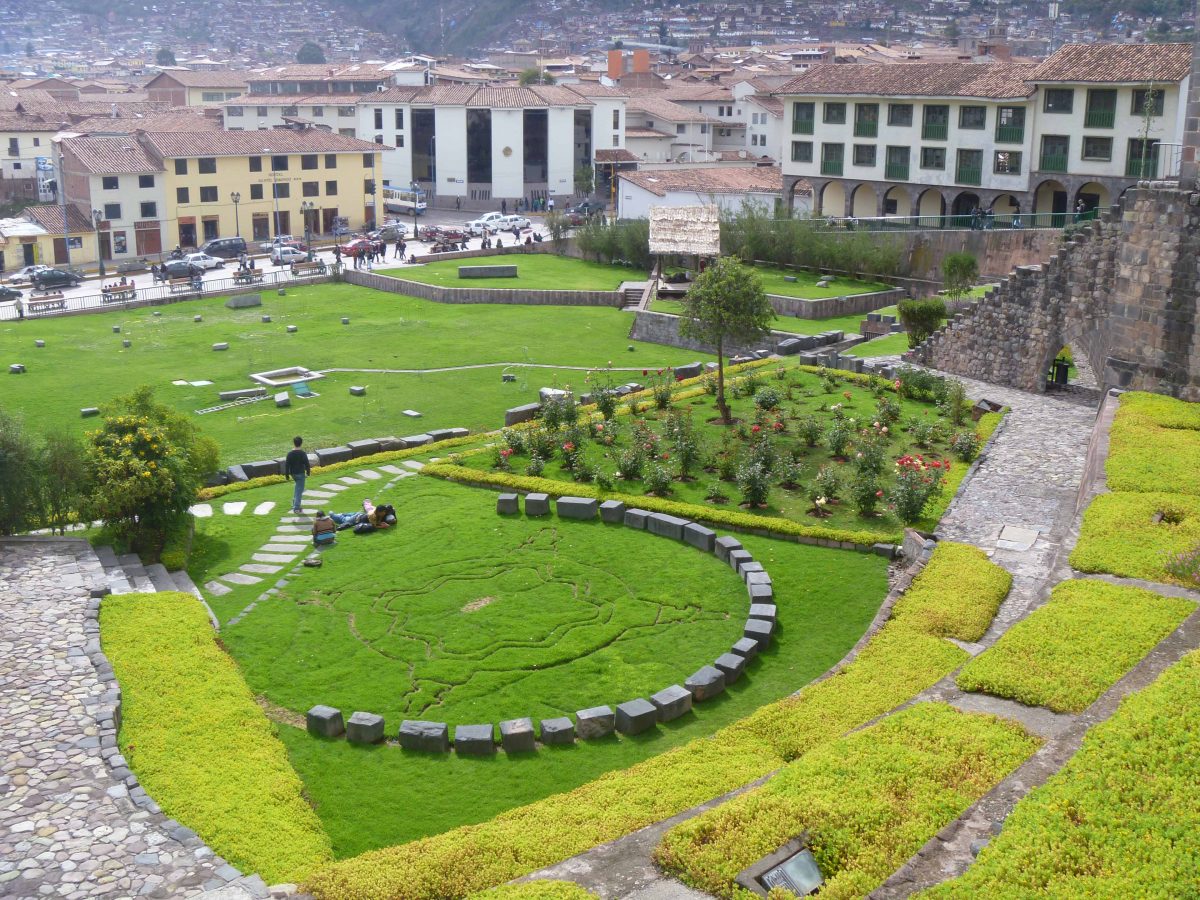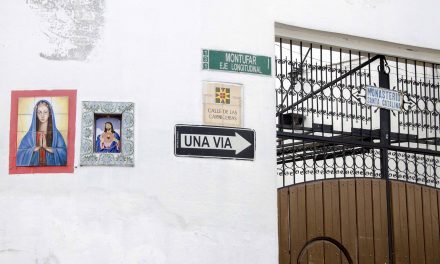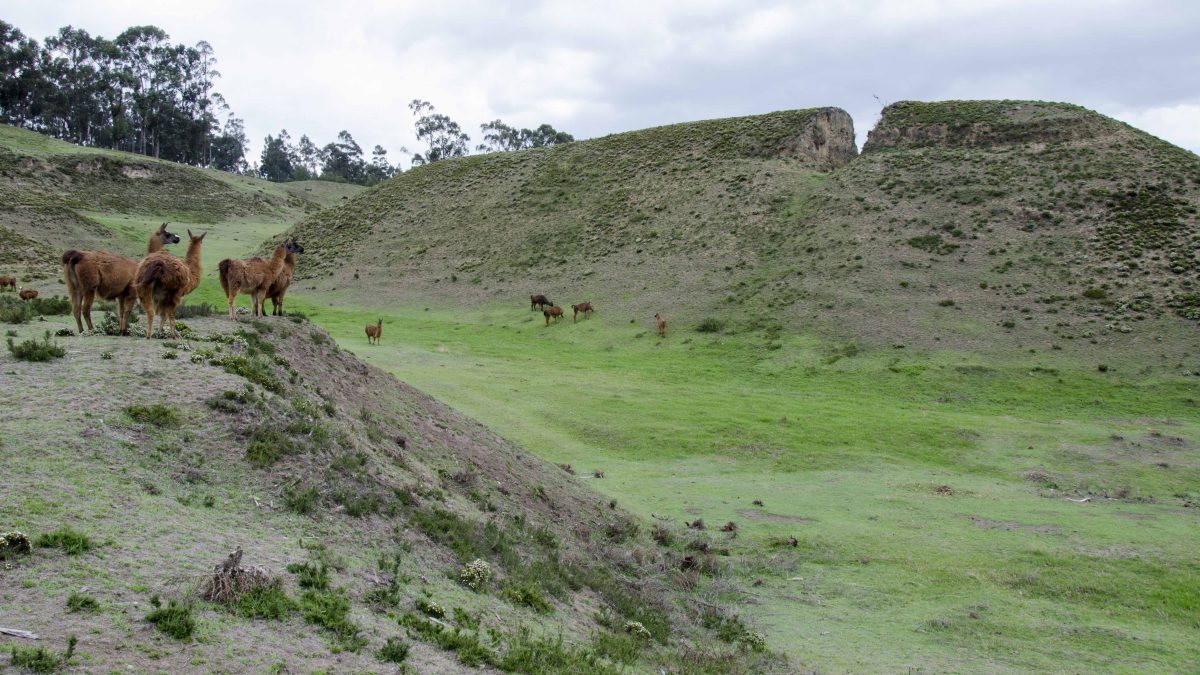First published on February 19, 2019 • Last updated on February 19, 2019
This page may contain affiliate links; if you purchase through them,
we may receive a small commission at no extra cost to you.
We only planned for a three-day stay in San Agustin, Colombia. That much time gave us plenty of opportunities to see the ancient sculptures in the National Archeology Park sites; Alto de los Idoles, Alto de las Piedras, and the main archeology park in San Agustin. To our surprise, there were more sites to explore that are not included in the National Park. So we did the only logical thing and extended our stay one more day to make sure we covered this area to the best extent possible.
The three additional sites: El Tablon, La Chaquira, and La Pelota, can be visited on horseback via a ten kilometer route from San Agustin. Given my complete lack of experience with horses, we chose to do the same route with a local guide in his truck.
El Tablon, Remote but not impossible
El Tablon was the first site we visited and the one with the worst road access. We didn’t need to use four-wheel drive. However, the way in was straight down a rutted dirt road followed by a river crossing. Not for the faint of heart. Once that was over, it was a nice drive thru farm fields to a house with the statues in their side yard.

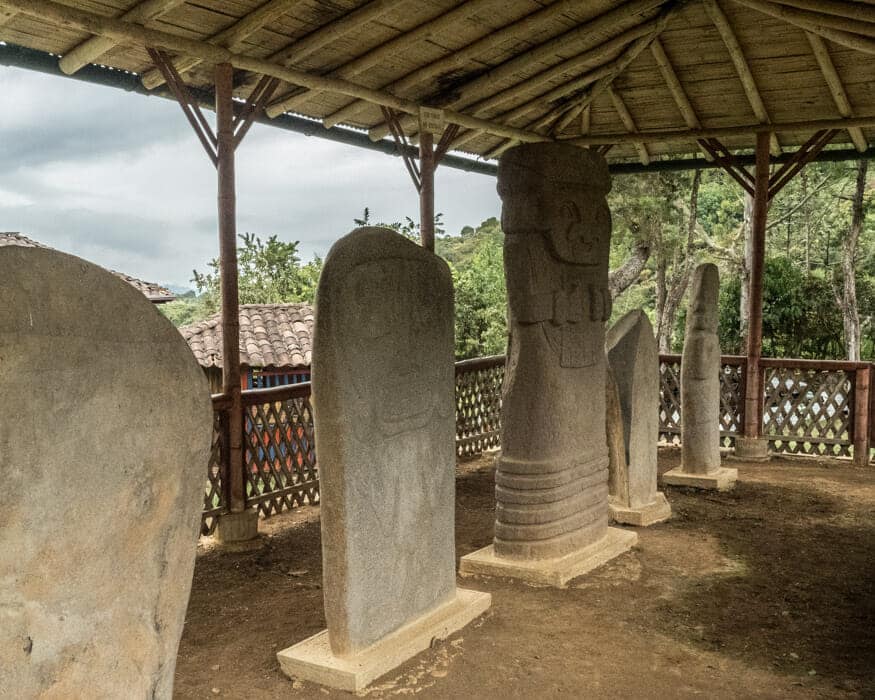
There were no interpretive signs and our guide only knew that the statues came from tombs on the nearby hillside. Fortunately, a couple of statues were interesting due to their unique design.
For example, in the picture below, the detail of the chest-piece and the nose-ring are uncommon. In fact, I believe this is the only statue with a nose-ring in the San Agustin area. However, the head-dress, necklace, and wrist-bands are consistent with other examples seen in the San Agustin area. The level of detail on the work is also very unusual. For instance, there are many more layers of necklace and wrist-bands than we saw at other locations.
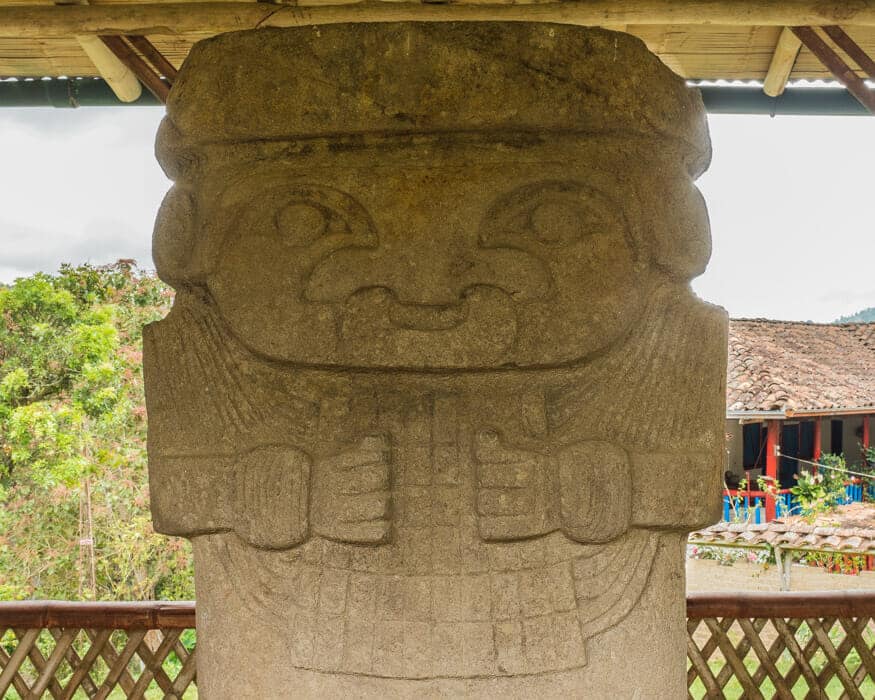
In the following photo, the statue shares many of the features of the more animalistic examples seen in the region. Additionally, given the number of teeth shown, it may have represented a very powerful entity. I also find its ten fingers and toes interesting. Most of the other animalistic figures don’t have this level of detail.
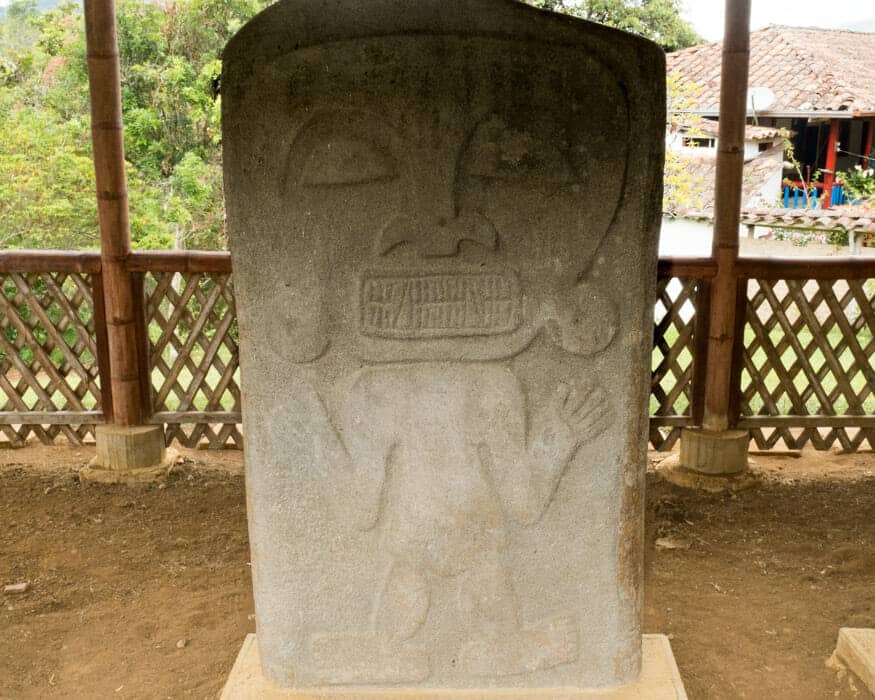
La Chaquira, Unique Petroglyphs
The only items found in the valley that haven’t moved in the centuries since they were created, these petroglyphs are perched overlooking a massive valley with the Magdalena River flowing at the bottom. Our guide told us that the ancient path crossing this site connects the two sides of the valley, bridging two very steep mountainsides. Interestingly enough, the site Alto de los Piedras is located directly across the valley along the same path.
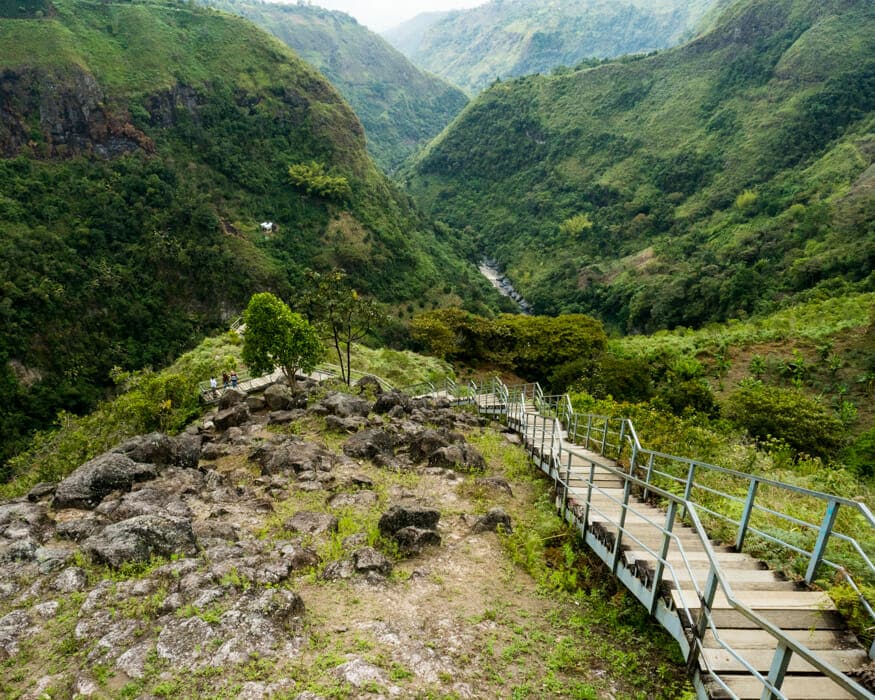
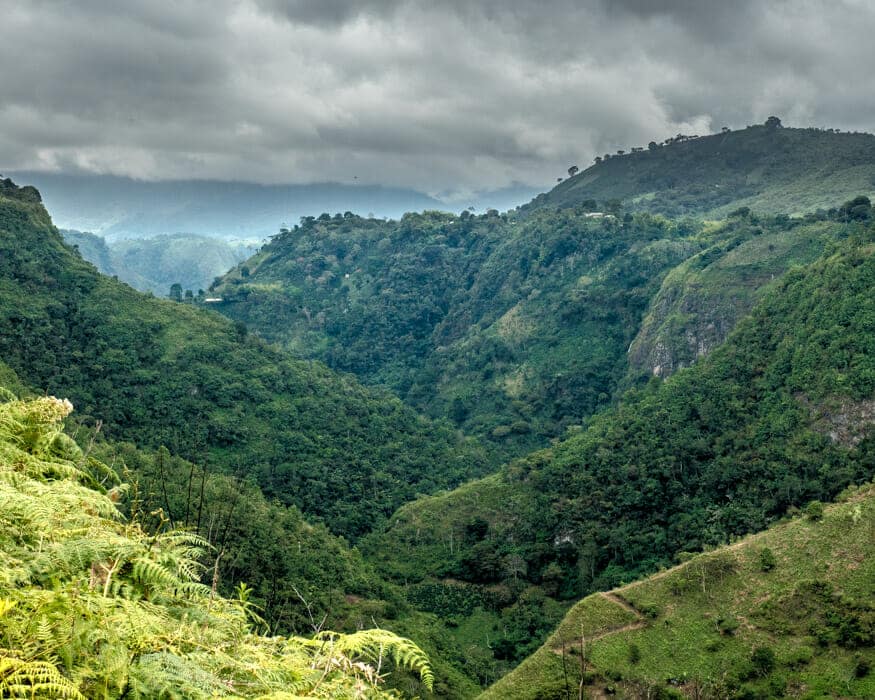
One figure stands out at this site, a man standing erect with two hands held high on either side of his head, his huge eyes bulging above his artfully crafted nose and mouth. Facing the setting sun, this figure is accompanied by at least two other petroglyphs. Given the ferns and grass growing on the stones of the hillside, one has to wonder what other figures may remain hidden away from modern eyes.
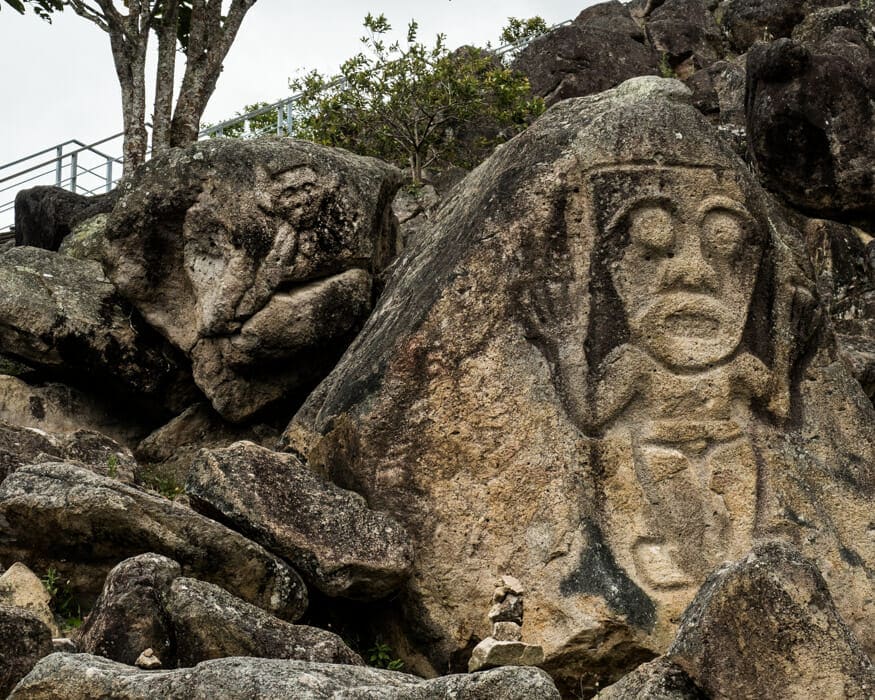
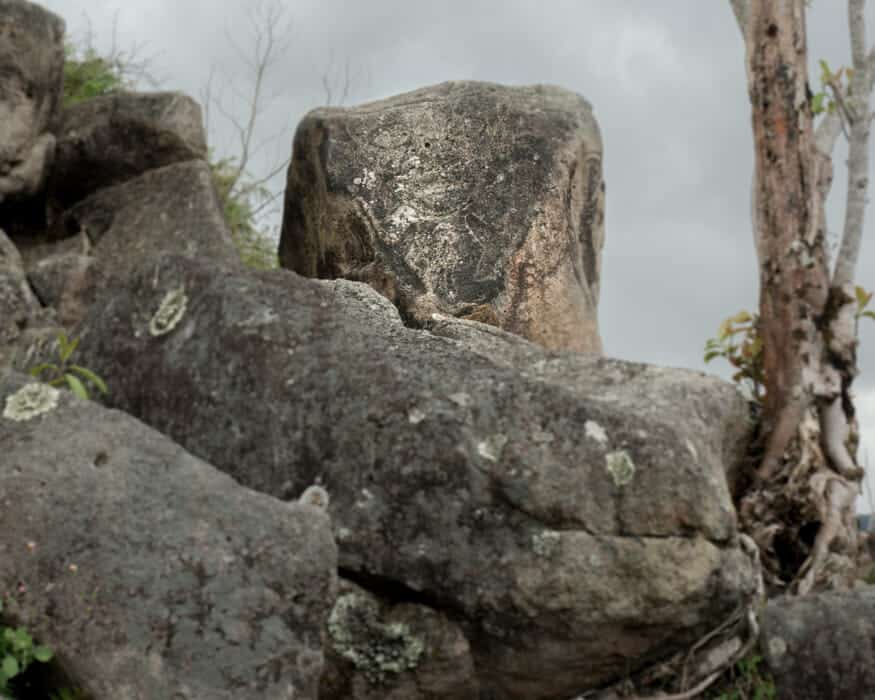
El Purutal and La Pelota, Twin Sites at one location
Located about two hundred yards from each other, El Purutal and La Pelota can be visited at the same time.
Discovered first, El Purutal is much like El Tablon in that there were only a few recovered statues. What’s more, the statues are located on a large, artificially leveled, open space much higher than the surrounding area. Unfortunately, there was no information about whether this was a modern or ancient design feature.
The most interesting statue at this site is a bird holding a snake figure in its beak. We noted this motif multiple times in San Agustin sites. Interestingly, the example here is nearly the exact same size as the one seen on Mesita D in the San Agustin park.
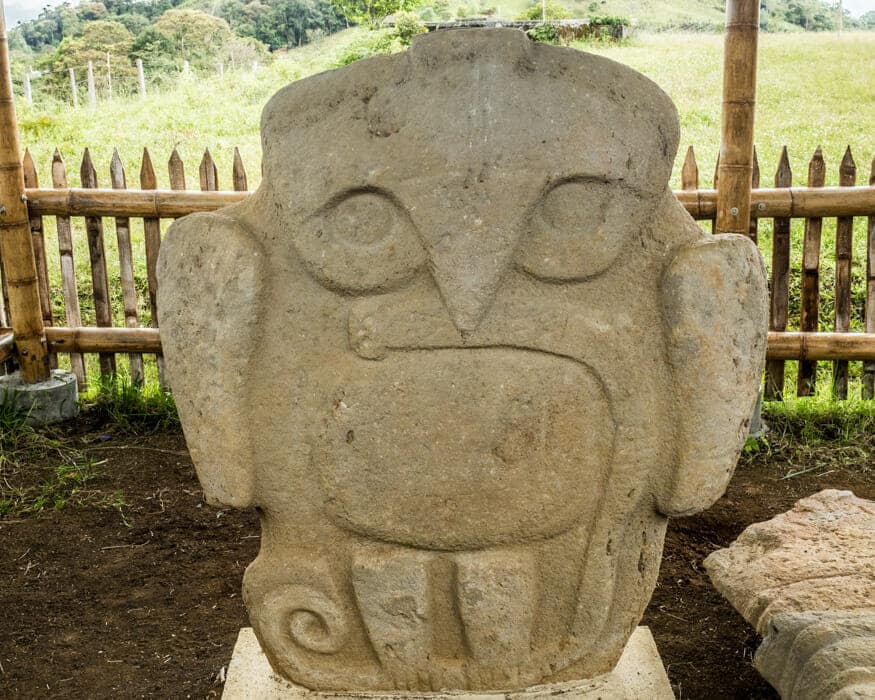
La Pelota consists of a single burial mound containing two tombs with the same monolithic burial structures or dolmans seen at the other San Agustin National Park locations. However, unlike most of the other burial mounds found in the area, this one is integrated into the hillside versus being a separate construction.
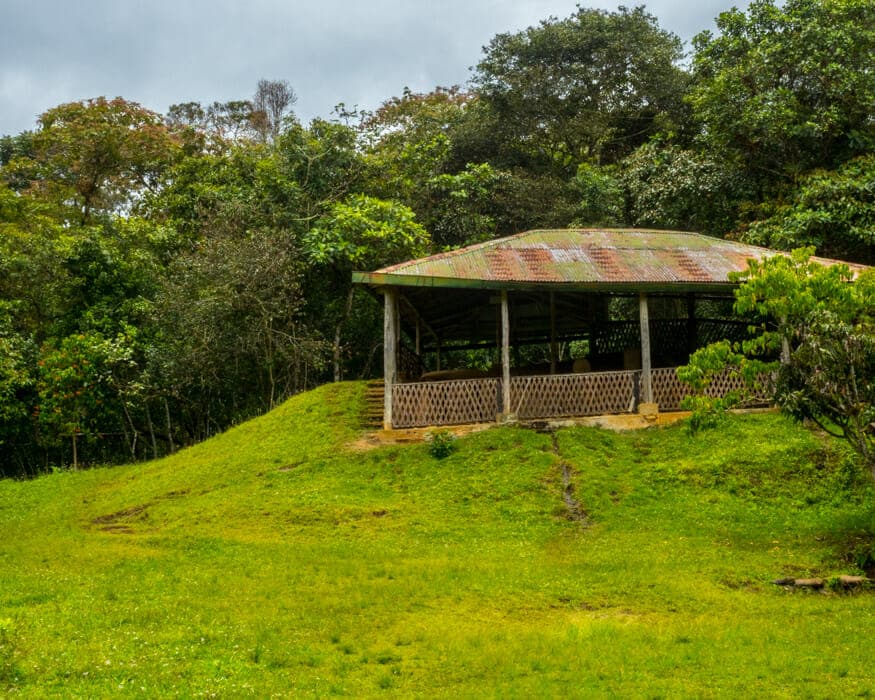
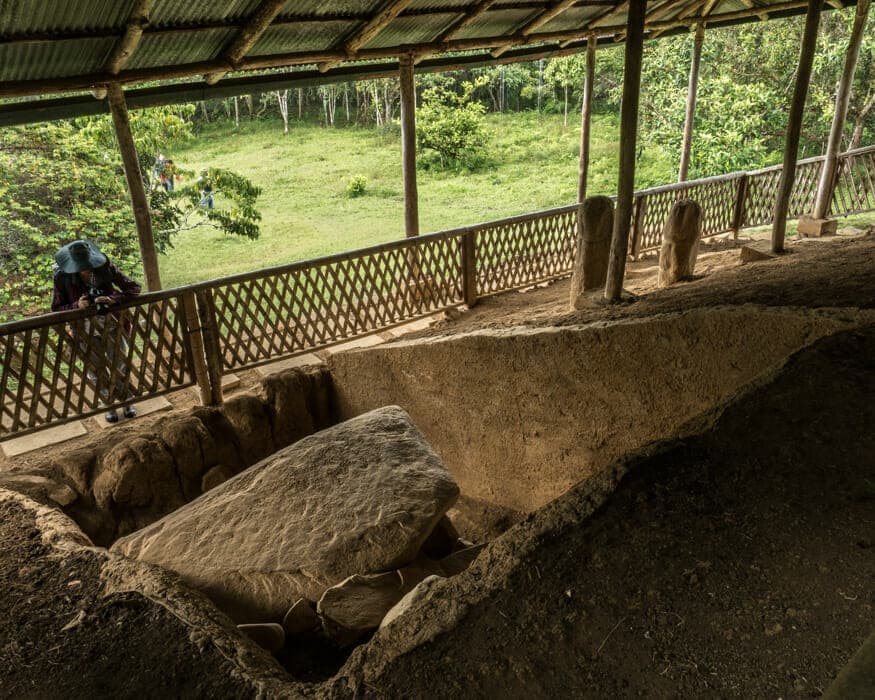

But the real cool part of La Pelota is the statues and their painted faces. One of the most recently uncovered set of ruins, La Pelota contains the only examples of statues with surviving paint. The paint and the impact of the actual statues themselves makes it one of my favorite archeological locations in the region.
The addition of the paint and the implicit danger to the children in the grasp of these monstrous figures really increased their impact. One can only imagine how alive these must have seemed in campfire or torch light while the local shaman told stories of how they punish those who violate the culture’s norms.


As unsettling as that first statue is, the second really takes the prize for the scariest statue in the entire San Agustin region. I don’t know if it’s the mini-skull head-dress or the eyes, but I wouldn’t want to run into this creature in my dreams.
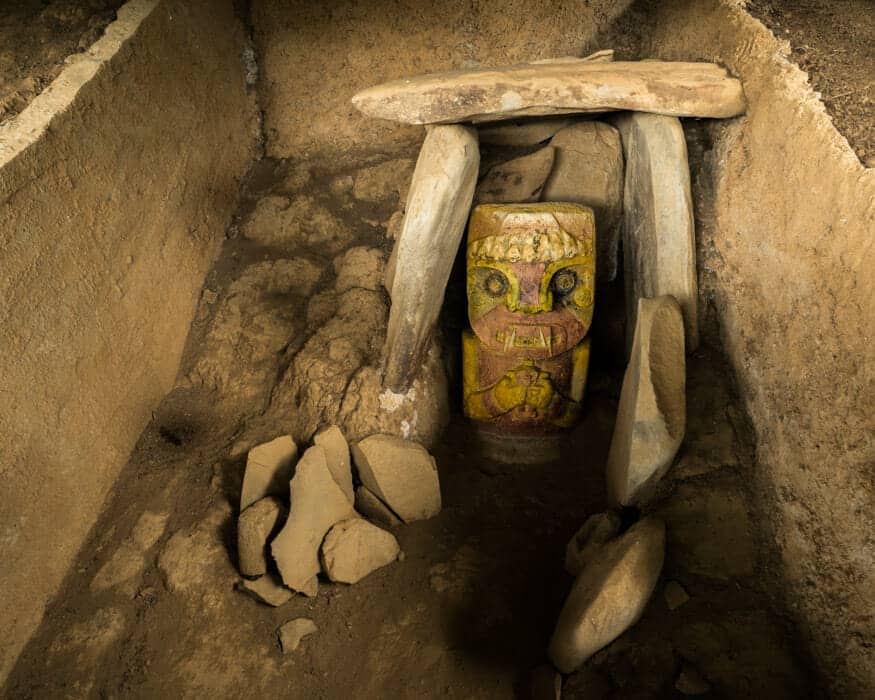

Were they worth the extra day?
For us, there is no question that these sites were worth staying the extra day. Seeing these works, especially the last two, puts the entire collection of the National Park into better perspective. They also remind us that as much as exists in the collection, this culture likely created many more statues in locations that remain to be discovered.



